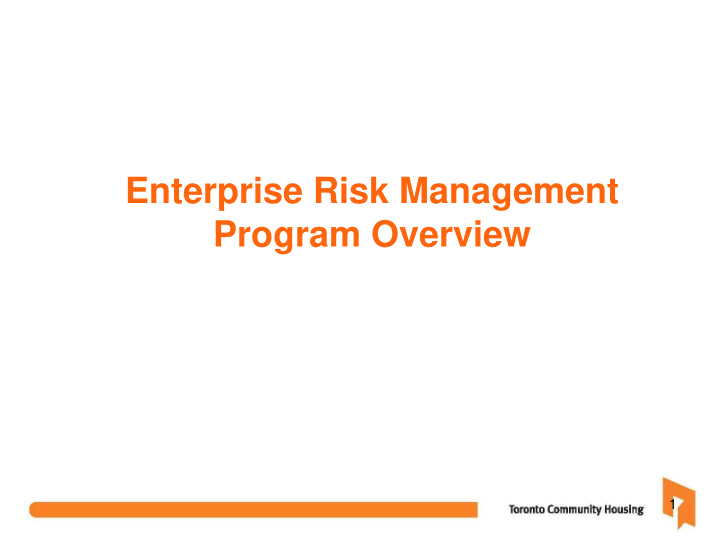



Enterprise Risk Management Program Overview 1
Enterprise Risk Management: An Overview ERM connects existing risk Strategic Risks management efforts being carried out by individual Reputational IT Risks Risks divisions/units by providing a common language for risk, risk appetite and risk management strategies Strategic Goals and across the corporation Objectives Operational Legal & or Program Compliance Risks Risks Business Financial Environment Risks Risks Strategic and Business Planning 2
Value of Enterprise Risk Management • Helps TCH proactively identify risks to ensure they are properly assessed and considered during the business planning process • Promotes better understanding of how risks may be inter- related and affect TCH on a broader scale • Enterprise-level view of risk adds rigor to strategic and divisional planning process • In alignment with strategic and divisional planning, assists TCH to allocate resources to mitigate most critical risks 3
Enterprise Risk Management Process Risk Assessment How likely is the risk to Risk Response occur? What will reduce the risk? What is the potential What are our “just in case” impact of the risk to the contingency actions? corporation? Who is the risk owner? How effective are we at w v controlling the risk? Risk Assessment Risk Response Strategic Goals & Risk Identification Objectives What can go wrong? x u What are the root Risk Monitoring & causes? Risk Identification What is impacted? Reporting Risk Monitoring & Reporting What controls are in Who wants to know and when place currently to do they want to know? reduce risk? How are we going to communicate it? How do we ensure policies and controls are followed? Enterprise Risk Management Framework 4
Enterprise Risk Management – Current Status at TCHC • Initiative is led by the Legal – Compliance unit and the Risk Management & Insurance unit • Risk Assessment Workshop held Q3 of 2016, building upon work started in 2015 • Objectives and tactics in divisional plans help with proactive mitigation to address these risks • Process is iterative and will be ongoing 5
Enterprise Risk Management - Top 10 Strategic Risks Capital Funding Operational Funding Operating Practices IT Systems Brand/Reputation Mandate Records Management Change Management Stakeholder Relations Data Standardization • Risk owners identified responsible for monitoring, reviewing and updating top risks 6
Enterprise Risk Management – Next Steps • Draft Enterprise Risk Policy is being reviewed internally • Work with Risk owners to develop risk mitigation workplans to ensure mitigation efforts are incorporated into divisional planning process • Work with Strategic Planning and Stakeholder Relations and Audit to develop aligned reporting tool/report to monitor compliance 7
Recommend
More recommend